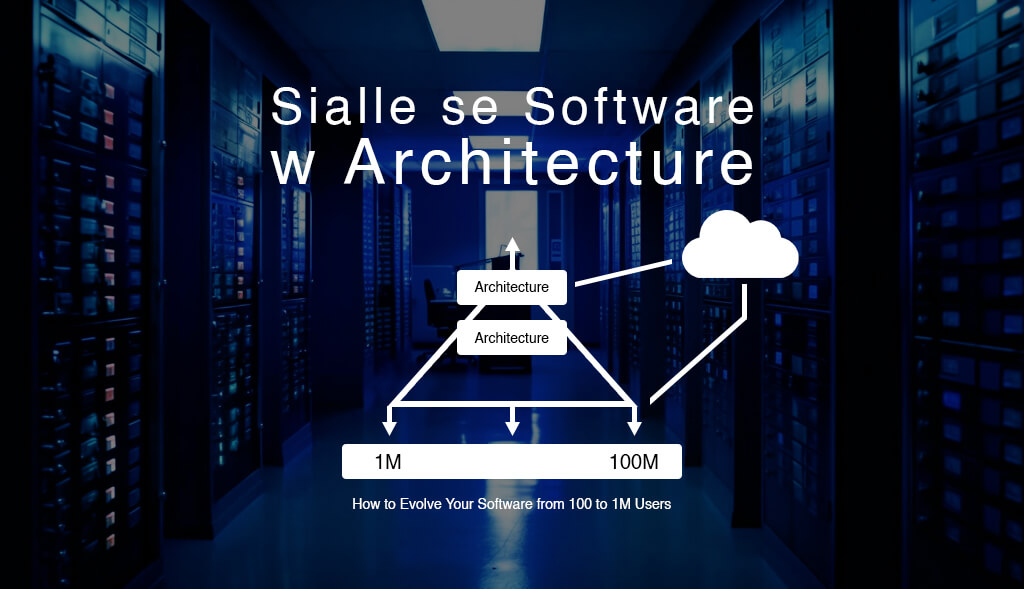Scaling Up: How to Evolve Your Software from 100 to 1M Users
From serving your first 100 users to reaching a million? That’s not just a traffic bump—it’s a profound transformation in how your entire system works. You’re not pouring more coffee into the same cup; you’re upgrading your architecture for a long-haul, high-performance future.
What Really Changes: Scaling Is About Evolution, Not Just Load
When we say “scaling,” we don’t mean just adding servers. We mean stepping into a new level of architecture that not only handles load, but thrives on it:
• Resource shifts—more compute power, smarter queues, faster storage.
• Growing complexity—keeping data consistent across services and regions.
• Rising costs—you can’t just keep scaling linearly.
• Reliability becomes life-or-death—millions of users expect near-zero downtime.
• Legacy code is kryptonite if left unrefactored.
Fail fast on bottlenecks; adapt fast on patterns—this is your mindset building block.
1. Break It Down: Decouple Tiers
Treat your app like three plants:
1. The Presentation Layer (UI)
2. The Application Layer (business logic)
3. The Data Layer (database/IO)
Keep them separate—with clear contracts—so they can each grow at their own pace. Say goodbye to updating the whole system when you just tweak one part.
Yes, this adds orchestration, but the payoff is huge: fine-tuned scaling, independent deployments—and shields for localized failure.
Industry adoption of microservices highlights how decoupling unlocks scale and modularity
2. Go Micro: Service-Oriented or Microservices Architecture
Imagine e-commerce as stand-alone functions: auth, catalog, cart, orders. Each lives in its own world.
Benefits:
• Scale only the high-traffic parts.
• Devs focus on one service without global impacts.
• Rein in accidental coupling and reduce blast radius of failure.
It’s no surprise big players like Amazon and Netflix structure this way. Trusted resources highlight improved scaling, fault isolation, and development velocity.
3. Cloud-Native Makes It Easier
Why manage servers if you don’t need to?
• AWS Lambda / Azure Functions / GCP Cloud Functions scale your backend instantly, billing only used computation.
• Message queues (SQS, Pub/Sub) let you decouple layers and absorb traffic safely.
• CDNs + object storage like S3 or CloudFront deliver content worldwide with minimal latency.
These managed services let you think less about ops and more about features.
4. Keep Things Flowing: Auto Scaling & Load Balancing
• Load balancers distribute traffic smartly across your service fleet.
• Health checks make sick instances automatically retire.
• Auto scaling policies based on metrics (CPU, mem, latency) spin up or down machine instances instantly.
Smart use of time-based and demand-based scaling helps you handle peaks—without keeping machines online all night.
5. Databases: Think Federation, Shards, or NoSQL
You can’t treat your database like a monolith when you’re talking millions of users.
• Database federation lets multiple autonomous databases present a unified interface—ideal for isolating domains like payments vs. analytics.
• Sharding splits a table horizontally—e.g. by user ID range—so each shard handles only a part of the data load.
• NoSQL databases like DynamoDB auto-scale and deliver consistent low-latency responses, while abstracting away much of the operational work.
Each approach has trade-offs—choose based on how your data naturally residues or scales.
6. Speed Up With Caching
• Read-heavy scenarios: cache data in tools like Redis or Memcached to reduce read load by up to 95%.
• Write-heavy scenarios: use write-behind or write-through patterns to smooth out spikes.
• Session data: store session info in a distributed cache instead of server memory.
Big names like Netflix use extensive caching layers for millisecond responses and fewer DB bottlenecks. Real-world evidence shows per-request latency drops and database pressure evaporates under successful caching.
7. Stateless = Horizontal Scale
Stateless design is non-negotiable if you want horizontal scale:
• Servers handle requests in isolation—no session stickiness needed.
• You can add or remove instances instantly.
• Rolling out updates becomes zero-downtime-friendly.
If a server falls over, clients don’t lose data—they retry or proceed with other healthy nodes.
Stateless services are simpler to scale, fault-tolerant, and work well with distributed caching or token-based auth (like JWTs)
8. Run Lean, Iterate Fast
Scaling isn’t about infinite spikes—it’s about predictable resilience:
• Map out what scales where (e.g. catalog vs payment).
• Start with sensible defaults (40–70% CPU targets) and tune as you go.
• Use metrics dashboards and alerting to catch anomalies early.
• Automate deploys with CI/CD pipelines designed for distributed systems.
In effect, you’re shifting from “fixing today’s load” to “preparing for tomorrow’s growth.”
Quick Mood Board: Strategy Checklist
| Stage | What You Do | Why It Matters |
|---|---|---|
| Decouple tiers | Split UI, backend, DB | Isolate logic, scale layers independently |
| Adopt SOA/microservices | Break app into business domains | Independent scaling, reduced deployment risk |
| Cloud-native tooling | Use serverless, managed queues, CDNs | Focus on your code—cloud handles infra |
| Auto scale & load balance | Based on CPU, latency, traffic metrics | Handle spikes and save costs |
| Scale database | Use federation, sharding, or NoSQL | Avoid SQL bottlenecks and scaling limits |
| Apply caching smartly | Store frequent reads & session data | Cut latency, offload DB |
| Make everything stateless | Store state outside servers | Scale horizontally with no coordination headache |
| Monitor & iterate | Log everything, watch trends | Evolve architecture before problems hit |
Final Thoughts: It’s a Journey, Not an Overnight Fix
Your path to a million users shouldn’t feel like chasing a dragon—it should feel like forging one: shaped bit by bit, with incremental improvements and plenty of safety nets.
Start small: decouple, cache, statelessize. Build trust in your infrastructure. Automate your scaling. Then grow. And grow some more—with confidence.








